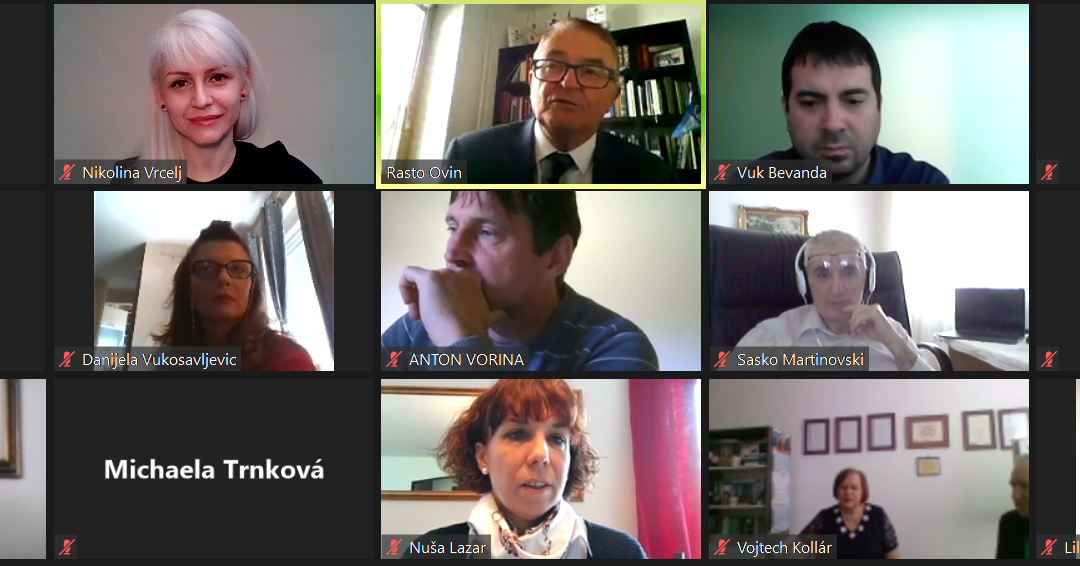Analysis of the Number of European Union Citizens Working in the Regions of Slovakia in the Period 2013-2019
Ľubica Hurbánková – University of Economics in Bratislava, Dolnozemská cesta 1, 852 35 Bratislava, Slovak Republic
7th International Scientific ERAZ Conference – ERAZ 2021 – Selected Papers: KNOWLEDGE BASED SUSTAINABLE DEVELOPMENT, Online/virtual, May 27, 2021
ERAZ Conference Selected Papers are published by: Association of Economists and Managers of the Balkans – Belgrade, Serbia
ERAZ conference partners: Faculty of Economics and Business, Mediterranean University, Montenegro; University of National and World Economy – Sofia, Bulgaria; Faculty of Commercial and Business Studies – Celje, Slovenia; AMBIS University, Prague – Czech Republic; Faculty of Applied Management, Economics and Finance – Belgrade, Serbia
ERAZ Conference 2021 Selected Papers ISBN 978-86-80194-47-9, ISSN 2683-5568, DOI: https://doi.org/10.31410/ERAZ.S.P.2021
Keywords:
Number of working EU
citizens;
Contribution method;
Suslov´s coefficient
Abstract: The paper aims to analyse the regions of Slovakia based on the number of working citizens of the European Union. The contribution method is used to find out in which region the number of working foreigners increased the most, and in which the least. Suslov´s coefficient of similarity of structures is used to analyse changes in the structure of the analysed indicator. From the results of the realized analysis we found out that the number of working foreigners in Slovakia increased the most in the year 2014 compared to 2013, by 63.40%. Bratislava Region (16.92%), Žilina Region (11.37%) and Prešov Region (9.63%) contributed the most to this increase, while Košice Region (0.91%) and Trenčín Region (1.07%) contributed the least. In the year 2019 compared to 2018 was recorded an increase of only 6.10%. Suslov’s coefficient of similarity of structures acquires the value 0.0230, which means a high degree of similarity of structures of the number of working foreigners in the years 2013 and 2019.

ERAZ Conference
Creative Commons Non Commercial CC BY-NC: This article is distributed under the terms of the Creative Commons Attribution-Non-Commercial 4.0 License (https://creativecommons.org/licenses/by-nc/4.0/) which permits non-commercial use, reproduction and distribution of the work without further permission.

References
Hindls, R. & Hronová, S. (1997). Vývoj domácího produktu z hlediska přispění jednotlivých factorů. Politická ekonomie, 5, pp. 699-707.
Hindls, R., Kaňoková, J. & Novák, I. (1997). Metody statistické analýzy pro ekonomy. Praha: MANAGEMENT Press.
Hurbánková, Ľ. & Sivašová, D. (2018). Hospodárska štatistika I. Bratislava: Vydavateľstvo EKONÓM.
Kahounová, J. (1994). Měření podobnosti struktur. Praha: VŠE PRAHA.
Karpov, A. (2007). Measurement of Disproportionality in PR System. Moscow: State University – Higher School of Economics.
Kotlebová, E. et al. (2017). Štatistika pre bakalárov v praxi. Bratislava: Vydavateľstvo EKONÓM.
Pozdniaková, I. (1981). Některé spůsoby vyhodnocovaní změn struktury a jejich vypovídací schopnost. Statistika, 11, pp. 490-499.
SME. (2021). Počet cudzincov pracujúcich na Slovensku naďalej klesá. [online]. Bratislava. [Cited 14.5.2021]. Retrieved: <https://ekonomika.sme.sk/c/22578499/pocet-cudzincov-pracujucich-na-slovensku-nadalej-klesa.html>.
Ústredie práce, sociálnych vecí a rodiny. (2021). Zamestnávanie cudzincov – štatistiky. [online]. Bratislava. [Cited 13.5.2021]. Retrieved: <https://www.upsvr.gov.sk/statistiky/zamestnavanie-cudzincov-statistiky.html?page_id=10803>.

